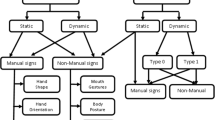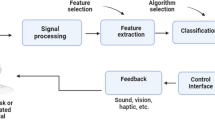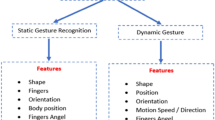Abstract
The tongue is an aesthetically useful organ located in the oral cavity. It can move in complex ways with very little fatigue. Many studies on assistive technologies operated by tongue are called tongue–human computer interface or tongue–machine interface (TMI) for paralyzed individuals. However, many of them are obtrusive systems consisting of hardware such as sensors and magnetic tracer placed in the mouth and on the tongue. Hence these approaches could be annoying, aesthetically unappealing and unhygienic. In this study, we aimed to develop a natural and reliable tongue–machine interface using solely glossokinetic potentials via investigation of the success of machine learning algorithms for 1-D tongue-based control or communication on assistive technologies. Glossokinetic potential responses are generated by touching the buccal walls with the tip of the tongue. In this study, eight male and two female naive healthy subjects, aged 22–34 years, participated. Linear discriminant analysis, support vector machine, and the k-nearest neighbor were used as machine learning algorithms. Then the greatest success rate was achieved an accuracy of 99% for the best participant in support vector machine. This study may serve disabled people to control assistive devices in natural, unobtrusive, speedy and reliable manner. Moreover, it is expected that GKP-based TMI could be alternative control and communication channel for traditional electroencephalography (EEG)-based brain–computer interfaces which have significant inadequacies arisen from the EEG signals.








Similar content being viewed by others
References
Nam Y, Koo B, Cichocki A, Choi S (2014) GOM-face: GKP, EOG, and EMG-based multimodal interface with application to humanoid robot control. IEEE Trans Biomed Eng 61(2):453–462
Nam Y, Koo B, Cichocki A, Choi S (2016) Glossokinetic potentials for a tongue–machine interface. IEEE Syst Man Cybern Mag 2(1): 6–13
Reuderink B, Poel M, Nijholt A (2011) The impact of loss of control on movement BCIs. IEEE Trans Neural Syst Rehabil Eng 19(6):628–637
Nam Y, Zhao Q, Cichocki A, Choi S (2012) Tongue-rudder: a glossokinetic-potential-based tongue–machine interface. IEEE Trans Biomed Eng 59(1):290–299
Huo X, Wang J, Ghovanloo M (2008) A magneto-inductive sensor based wireless tongue-computer interface. IEEE Trans Neural Syst Rehabil Eng 16(5):497–504
Huo X, Ghovanloo M (2012) Tongue drive: A wireless tongue-operated means for people with severe disabilities to communicate their intentions. IEEE Comm Mag 50(10):128–135
Vaidyanathan R, Gupta L, Kook H, West J (2006) A decision fusion classification architecture for mapping of tongue movements based on aural flow monitoring. In: IEEE international conference on robotics and automation. pp. 3610–3617
Vaidyanathan R, Chung B, Gupta L, Kook H, Kota S, West JD (2007) Tongue-movement communication and control concept for hands-free human-machine interfaces. IEEE Trans on Sys Man Cybern 37(4):533–546
Tang H, Beebe DJ (2006) An oral tactile interface for blind navigation. IEEE Trans Neural Syst Rehabil Eng 14(1):116–123
Rechy-Ramirez EJ, Hu H (2015) Bio-signal based control in assistive robots: a survey. Digit Commun Netw 1(2):85–101
Bascil MS, Tesneli AY, Temurtas F (2016) Spectral feature extraction of EEG signals and pattern recognition during mental tasks of 2-D cursor movements for BCI using SVM and ANN. Australas Phys Eng Sci Med 39(3):665–676
Nam Y, Bonkon K, Choi S (2014) Language-related glossokinetic potentials on scalp. IEEE international conference on systems, man, and cybernetics, San Diego, USA. pp. 1063–1067
Vanhatalo S, Voipio J, Dewaraja A, Holmes MD, Miller JW (2003) Topography and elimination of slow EEG responses related to tongue movements. NeuroImage 20:1419–1423
Ramadan RA, Vasilakos AV (2017) Brain computer interface: control signals review. Neurocomputing 223:26–44
Klem GH, Lüders HO, Jasper HH, Elger C (1999) The ten-twenty electrode system of the international federation. Electroencephalogr Clin Neurophysiol 52:3–6
Yalcın N, Tezel G, Karakuzu C (2015) Epilepsy diagnosis using artificial neural network learned by PSO. Turk J Electr Eng Comp Sci 23:421–432
Daly JJ, Fang Y, Perepezko EM, Siemionow V, Yue GH (2006) Prolonged cognitive planning time, elevated cognitive effort, and relationship to coordination and motor control following stroke. IEEE Trans Neural Syst Rehabil Eng 14(2):168–171
Alpaydın E (2010) Introduction to machine learning. MIT Press, Cambridge
Bascil MS, Tesneli AY, Temurtas F (2015) Multi-channel EEG signal feature extraction and pattern recognition on horizontal mental imagination task of 1-D cursor movement for brain computer interface. Australas Phys Eng Sci Med 38(2):229–239
Bozkurt MR, Yurtay N, Yılmaz Z, Sertkaya C (2014) Comparison of different methods for determining diabetes. Turk J Electr Eng Comp Sci 22:1044–1055
Obermaier B, Neuper C, Guger C, Pfurtscheller G (2001) Information transfer rate in a five-classes brain-computer interface. IEEE Trans Neural Syst Rehabil Eng 9(3):283–288
Sengelmann M, Engel AK, Maye A (2017) Maximizing information transfer in SSVEP-based brain-computer interfaces. IEEE Trans Biomed Eng 64(2):381–394
Shannon CE, Weaver W (1964) Mathematical theory of communication champaign. University of Illinois Press, Illinois
Cortes C, Vapnik V (1995) Support-vector networks. Mach Learn 20:273–297
Aydemir Ö, Kayıkçıoğlu T (2016) Investigation of the most appropriate mother wavelet for characterizing imaginary EEG signals used in BCI systems. Turk J Electr Eng Comp Sci 24:38–49
Chang CB, Seo BH (2000) Development of new brain computer interface based on EEG and EMG. In: Proceedings of the IEEE international conference on robotics and biomimetics, Thailand. pp. 1665–1670
Leeb R, Lee F, Keinrath C, Scherer R, Bischof H, Pfurtscheller G (2007) Brain-computer communication: motivation, aim, and impact of exploring a virtual apartment. IEEE Trans Neural Syst Rehabil Eng 15(4):473–481
Zhu J, Hoi SCH, Lyu RT (2008) Robust regularized kernel regression. IEEE Trans Syst Man Cybern 38(6):1639–1644
Jayaram V, Alamgir M, Altun Y, Schölkopf B, Grosse-Wentrup M (2016) Transfer learning in brain-computer interfaces. IEEE Comput Intell Mag 11(1):20–31
Kao JC, Stavisky SD, Sussillo D, Nuyujukian P, Shenoy KV. (2014) Information systems opportunities in brain-machine interface decoders. Proc IEEE 102(5):666–682
Barreto AB, Taberner AM, Vicente LM. (1996) Classification of spatio-temporal EEG readiness potentials towards the development of a brain-computer interface, bringing together education, science and technology. In: Proceedings of the IEEE, Tampa, FL, USA. pp. 99–102
Cerutti S (2009) In the spotlight: biomedical signal processing. IEEE Rev Biomed Eng 2:9–11
Bao X, Wang J, Hu J (2009) Method of individual identification based on electroencephalogram analysis. In: International conference on new trends in information and service science, 2009, NISS’09, (pp. 390–393). IEEE.
Miller KJ, Shenoy P, Nijs M, Sorensen LB, Rao RJP, Ojemann JG (2008) Beyond the gamma band: the role of high-frequency features in movement classification. IEEE Trans Biomed Eng 55(5):1634–1637
Acknowledgements
The authors would like to thank the students of the University of Bozok for providing the participation for this research.
Author information
Authors and Affiliations
Corresponding author
Ethics declarations
Conflict of interest
The authors declare that they have no conflict of interest.
Ethical approval
The study was approved by the Ethical Committee of Sakarya University, stated in the number of 61923333/044 decision document. All procedures performed in studies involving human participants were in accordance with the ethical standards of the institutional and/or national research committee.
Informed consent
Informed consent was obtained from all individual participants included in the study.
Rights and permissions
About this article
Cite this article
Gorur, K., Bozkurt, M.R., Bascil, M.S. et al. Glossokinetic potential based tongue–machine interface for 1-D extraction. Australas Phys Eng Sci Med 41, 379–391 (2018). https://doi.org/10.1007/s13246-018-0635-x
Received:
Accepted:
Published:
Issue Date:
DOI: https://doi.org/10.1007/s13246-018-0635-x




